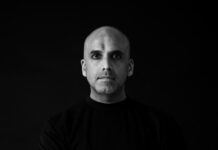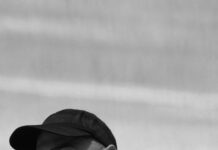Photo: Press (Woo York)
Woo York’s story is that of a duo which worked hard and finally reaped what they had sown. Having debuted in 2009 with not one but three singles that year, Andrew Vanzhula and Dennis Andriyanov quickly became an unstoppable force that soon attracted the attention of labels like Dynamic Reflection, Soma, Life and Death and later Dystopian. While the two Ukrainians started touring more internationally as a live act, their output became sparser, more focused and refined, resulting in the release of Chasing The Dream for Tale Of Us’s Afterlife label. Their performances however, one of which is being captured in their hour-long contribution to our Groove podcast still draw on spontaneity and experimentation – making Woo York’s mix a unique musical statement by two of the hardest working producers out there.
You have been quite prolific in recent times, sometimes releasing up to six singles per year. How does your working process look like, especially considering that one of you – Denys – has a family and a day-time job?
There were times years back when we had a luxury to be working 24/7 on new music. Now, that has changed a bit, we have way less time and became way more selective and critical to what we really want to release as a composition and what just to use as a collection of midi patterns/synth lines during performances. As you have mentioned I became a father and it turned my life upside down, especially for the first months, but luckily my wife manages to handle almost every aspect of it and that makes it way more easier for me. The day-time job still occupies my time during the week as I have been working as an audio domain programer for Avid for about eight years for now and while it’s really tough to combine two lives at once I decided that I will do it while I still can.
With Chasing The Dream for Tale Of Us’s Afterlife label, you presented your debut LP this May. Did you approach the production of a double LP differently than an EP?
For sure! There was an exact plan. We were thinking about recording an album for a while and had enough musical ideas to put the concept into practice just how we had imagined it. We took our time and recorded all ideas we had. Getting back to the question about the difference between an EP and an LP, with the LP we wanted to expand the spectrum of our sound by recording compositions oriented not only towards the dancefloor but also for home listening. Still the important goal for us was to keep our style throughout the whole album.
In a recent interview with Groove, Nastia pointed out that the Ukrainian scene is characterised by the mutual support that artists provide for each other, however the club scene as a whole has to face repressions. These days, you play relatively few gigs in your home country. What is your relationship with the scene like?
The electronic scene in Ukraine is original and wonderful, techno is definitely on the raise at the moment. The Closer club and the team behind it is something like a messiah in this movement. There are also huge youth raves like CХЕМА, conceptual mature teams like Rhythm Buro, stand-alone promoters like Smilov and a few other people that are at the core of the development of the local electronic music scene. However, we are performing very rarely in Ukraine. When we are on tour and somebody is asking, everyone is surprised by that. And to be honest we have no exact idea why, they simply do not book us. Our assumption is it’s because we are not “party-goers,” we almost never go out, and in Ukraine, communication is key. We just do not have time for this because during the week we are working hard and on the weekend we are always on tour, but even when we are not on tour we will spend some time with close friends and family rather than going to the club. Time is the most luxurious thing we have in our life at the moment.
Your contribution to our Groove podcast is an hour-long live recording of one of your – mostly hardware-based – sets. How much improvisation usually goes into your live performances?
It all depends on particular situation, the mood, and the reaction from the crowd. There is no perfect ratio between pre-recorded fragments and full-on jam sessions really. That said, we do try not to repeat the same set even twice, hence we’re constantly adding new material to our live set so that we have more options to choose from and more space for diversity. Some level of prior preparation may help to ensure a smoother, more consistent set though. The balance between frequent studio sessions and pre-show rehearsals on the one hand, and good knowledge of your software and gear as well as confidence in ourselves on the other hand results in what we consider the freedom to improvise. That feeling is always there when we hit the stage. Also, if we feel like our efforts are being met with critical acclaim from the audience, this always enhances the way we improvise. We basically start going for it big time.
Last but not least: Where can we see you live in the near future, and what are your plans as producers?
On Saturday we are heading to Amsterdam to perform our set at the at 24-hours Afterlife edition at Warehouse Elementenstraat. On our release schedule we have track that is coming out as a part of Dynamic Reflection ten-year anniversary series. This first EP, Sonos, is due by October 19th, while the entire series will be available as a limited box set later this year.
Stream: Woo York – Groove Podcast 180





